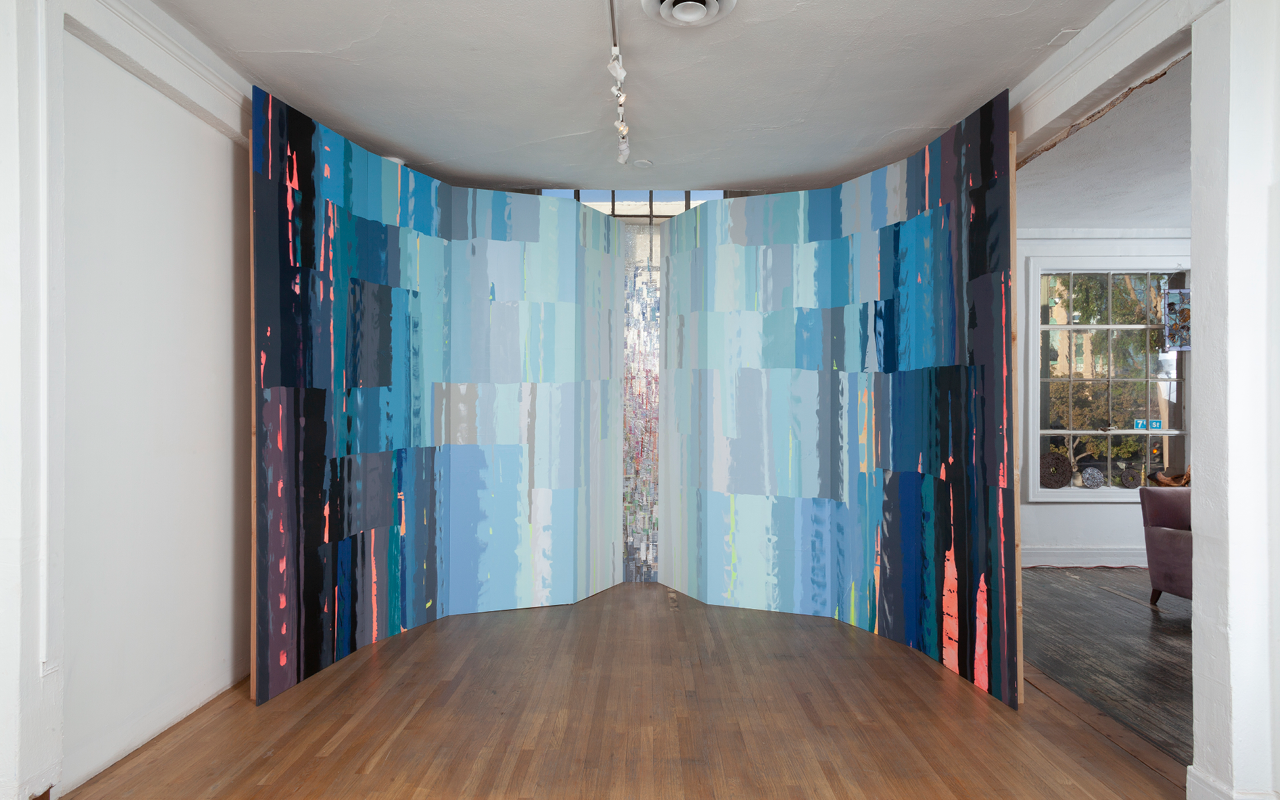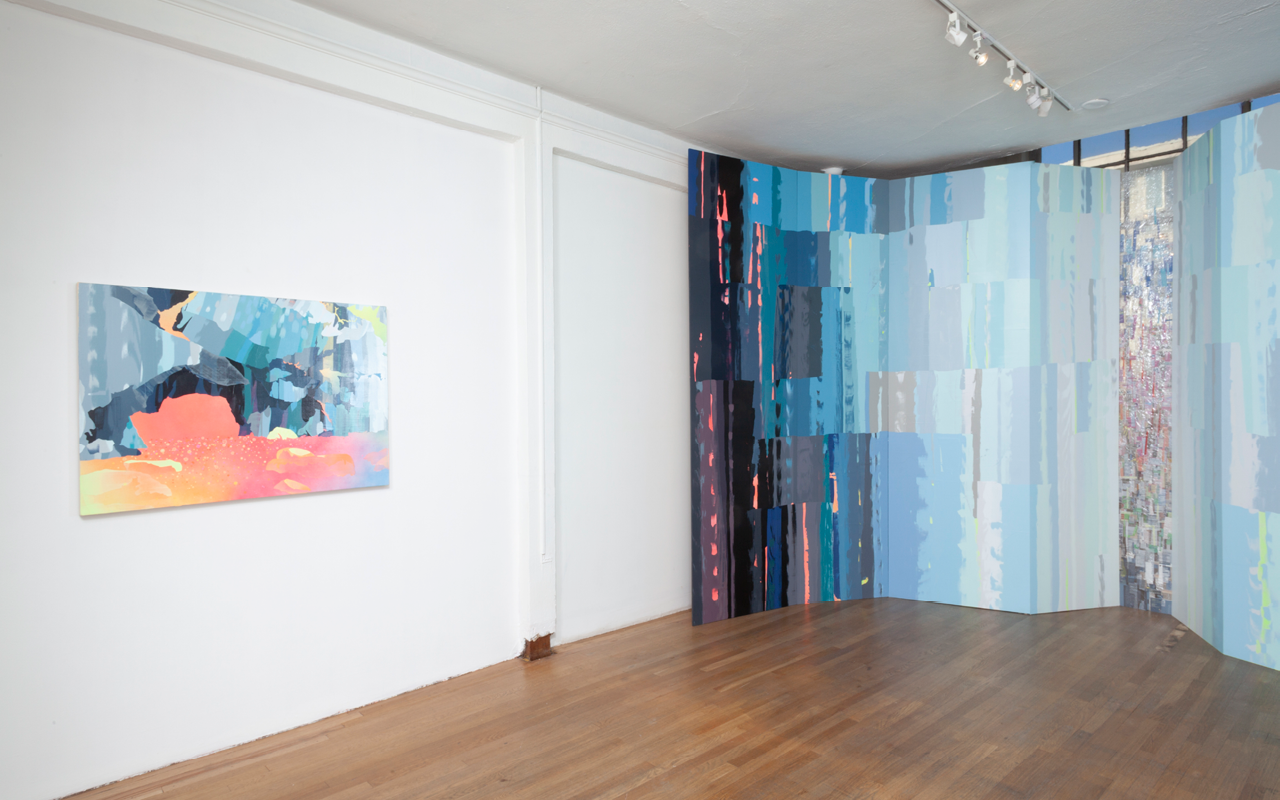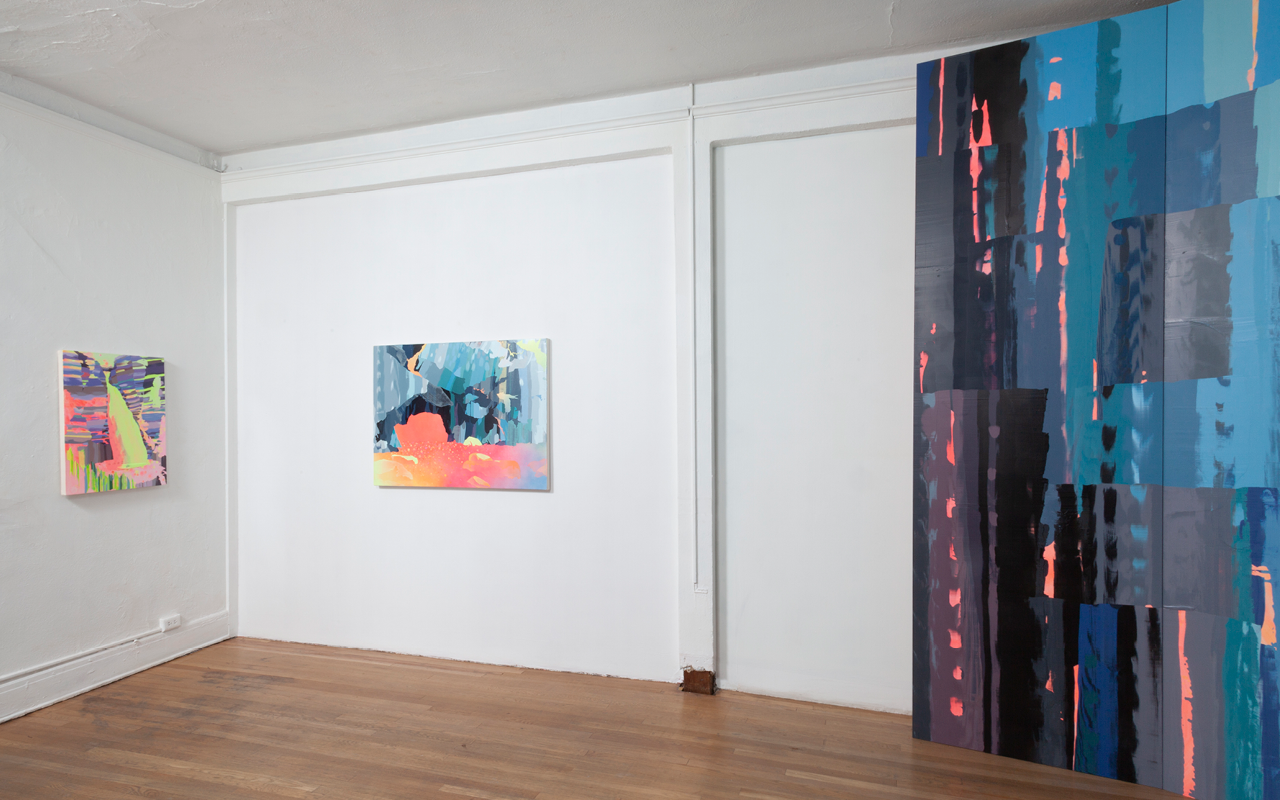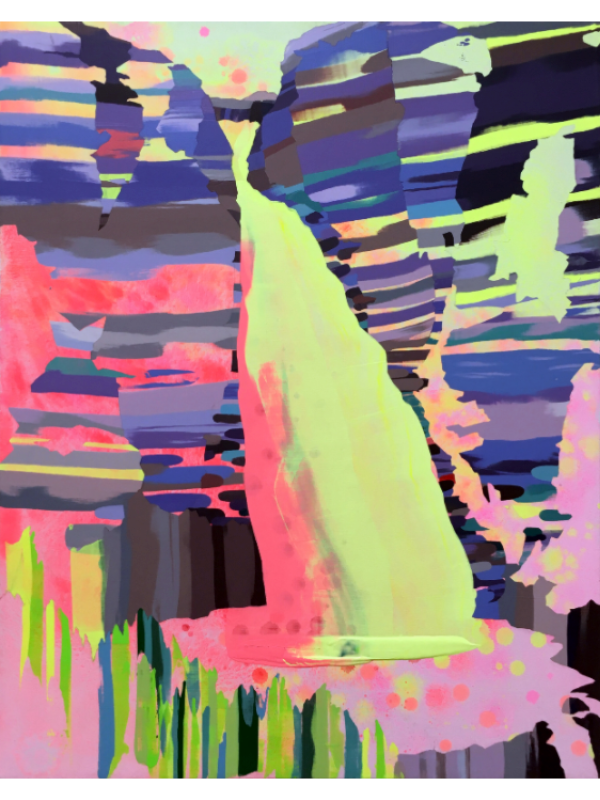Pearl C. Hsiung
Fault Zone
November 16 - December 21, 2019Gomukh, is the terminus of the Gangotri glacier whose ice melt is the source of the Bhagirathi River, one of the major headstreams of the Ganges River that flows through India and Bangladesh. In 2017, an Indian court granted Himalayan glaciers the status of environmental personhood, a conservation strategy that legally designates environmental entities the status of a person with rights enforceable by law. The concept emerged as a way to protect and preserve nature, and has been used as a vehicle for courts to legally recognize the relationships indigenous people have to their lands. New Zealand’s Maori have known the Whanganui River to be their ancestor and have been fighting for its protection since the late 1800s. A few weeks before Gomukh was granted legal personhood, a New Zealand court finally determined the Whanganui as a “living entity.” Ascribing human status to nature reveals and muddies the distinction between human and non-human and highlights the range that anthropocentric logic reaches in order to sustain an anthropo-friendly ecology.
The interdependence of human and nature have always been central to Hsiung’s painting, installation and video work. More recently, attention to the artificial has become forefronted in Hsiung’s meditation on human/nature interconnectedness to expand her focus into ideas surrounding a nature/human/artificial interface.
The works in Fault Zone take into account the inescapability of the artificial as woven into earthly matter; into the air, water, earth as well as into the flesh of human and the more-than-human. Two paintings, They (Gomukh) and They (Taranaki Falls) depict liquid landscapes in their active and morphing natural and personhood states. Flattening, or obfuscation of dimension, is both a conceptual and formal feature in Hsiung’s works. Various planes, plates, and concepts collapse onto the painted surface, obscuring the lines between human, nature, and artifice.
Emerging from the gallery floor stands Themses, a sited painting comprised of a series of vertical panels that allude to a topography-in-metamorphosis. Blocks of cool-toned paint, with the likeness of dense ice, are pulled downward and dragged across the surface; at times in excess, merging into oozey, marbling streams, while at other times in paucity, exposing the hot, bright fluorescent underpainting. The symmetrical painted panels frame a central ‘ice core’; a plexiglass stripe lined with plastic-film rubbish collected from non-recyclable and under-recycled food and product packaging. By merging anthropological, glacial, and polyethylene temporalities, Hsiung’s work is a proposition of what our lived present looks like.
Fault Zone ponders the state of our current ecology that is currently shifting beneath our feet. This movement can occur slowly, in the form of creep, or occur rapidly, as in a quake. Hsiung’s interest is in the extensiveness of this boundaryless space.
Pearl C. Hsiung's painting, installation and video works challenge our boundaries between the perceptions of "human" and "nature," de-centering culture as only a human endeavor and developing a more inclusive notion of ecology. She has exhibited in solo shows in Los Angeles, London and Kunming, China as well as in group exhibits such as The Beyond; Georgia O’Keeffe and Contemporary Art at the North Carolina Museum of Art and Crystal Bridges Museum of Art; Made in L.A. 2012 at the Hammer Museum; California Biennial 2006 at the Orange County Museum of Art; Busan Biennale 2006 at Museum of Modern Art in South Korea and Expander at the Royal Academy of Arts in London. Her work has been commissioned for a large-scale, tile mosaic mural for a new Metro Station at Grand Av Arts/Bunker Hill opening in downtown Los Angeles in 2022.

Themses, 2019. MDF, wood, acrylic paint, plexiglass, and under-recycled and non-recyclable plastic. 10 x 15 x 10 feet.


 They (Gomukh), 2019. Acrylic on canvas. 34 x 46 inches.
They (Gomukh), 2019. Acrylic on canvas. 34 x 46 inches. 




